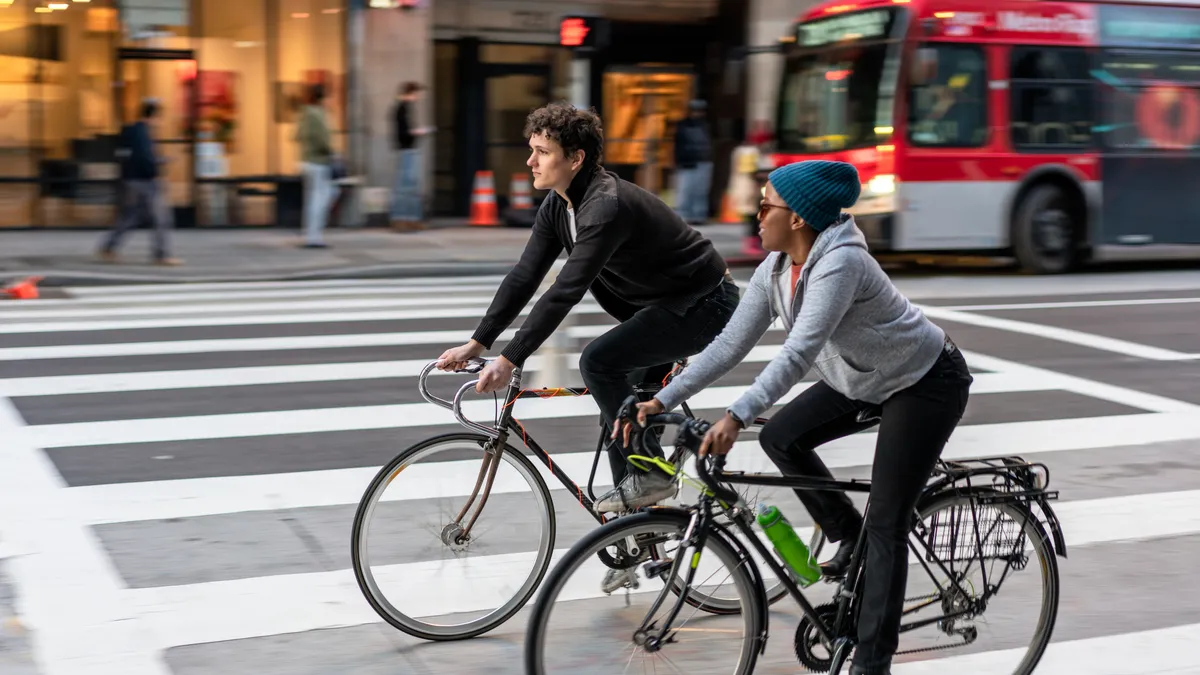Voters in Los Angeles will have the chance to decide whether they want bus, bicycle and pedestrian accommodations included in every major road project. The Los Angeles City Council voted last week to put a ballot initiative before voters requiring mobility enhancements whenever a city street or block of a certain length is added, repaved or otherwise altered.
But residents won't be able to vote until March 2024. The referendum missed the legal deadline for getting onto the November ballot. Michael Schneider, founder of Streets For All, a local citizens group dedicated to widening transportation options in the city, said the measure “should pretty easily pass at the ballot box.”
Council members and alternative transit advocates in a city known for its reliance on automobiles and related smog are trying to speed up projects that boost other forms of transportation. The council adopted its mobility plan in 2015 calling for 1,500 miles of additional bike lane, bus routes, and pedestrian safety improvements by 2035. But progress in implementing the plan hasn't moved as fast as advocates hoped. So far, only 3% of the proposed improvements have come to fruition.
Council President Nury Martinez previously called out that most of the traffic accidents occur in low-income areas. She issued a statement earlier this year that noted a Los Angeles Department of Transportation analysis showed that 70% of deaths and severe injuries occur on just 6% of the city’s streets.
Even with city efforts and amid the pandemic, 294 individuals, including 132 pedestrians, were killed in traffic-related incidents in 2021, Martinez’s council motion stated.
“The fact that it is unsafe to walk or bike even a short distance greatly limits the mobility options of our city's residents, especially the poor,” the motion states. It calls for the city to accommodate alternate transportation when streets are being repaved, especially in low-income zones.
LADOT noted that the victims of collisions are disproportionately children walking to school, seniors and people without cars.
Schneider said that structural problems in Los Angeles government are also holding up improvements for cyclists and pedestrians. The city’s Bureau of Street Services, which surfaces roads, doesn't coordinate with LADOT. And getting bike lanes across neighborhood lines can become impossible if council members oppose taking traffic or parking lanes away in their own districts. “The idea that you can [reallocate space] for cars to bikes is abhorrent to [many citizens],” Schneider said.











